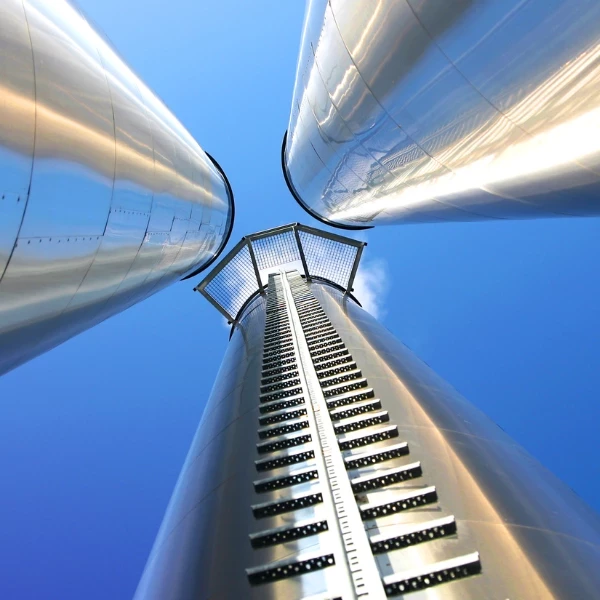10 reasons why FPSOs are the future of oil and gas
Add bookmarkExplaining Why FPSOs Are The Future Of The Oil And Gas Industry
If you're new to FPSOs or just need a reminder on why this is the area of the industry you need to keep your eye on, this article will cover the key points you have to know.
Fast roll out = quicker profits
The average semi-submersible oil rig takes 3-4 years to kit out and build, and a jack-up rig 2-3 years. An FPSO could be rolled out in months to a year, from laying the keel in dry dock to first launch, even less if an existing vessel is simply being modified into an FPSO.
Reduced investment = lessened overheads
As an example of how much a rig costs, the Deepwater Horizon was commissioned for $560 million in 2001 whereas an FPSO refit or fresh construction would cost considerably less. The largest FPSO in operation today - Exxon's Kizomba A - cost $800 million to construct, but with the ability to be easily refitted at regular intervals, it will outlast its fixed position counterparts by decades.
FPSOs do not have to be custom built
Unlike their fixed platform and semi-submersible counterparts, an FPSO does not have to start its life as an FPSO. The first ever floating production, storage and offloading unit, BP's Castellôn, was an oil tanker in a former life, and many of its descendants are also vessels that have been converted from transporters to harvesters of hydrocarbons. "Recycling" assets in this way brings inherent cost-saving benefits.
FPSOs can evade harsh weather
Unlike their fixed position cousins, FPSOs are mobile units and, as such, are able to navigate away from potentially perilous weather conditions. Permanent installations would be vulnerable in the hurricane-riddled Gulf of Mexico, cyclonic activity zones like the South China Sea and iceberg-infested waters around the Arctic circle, whereas FPSOs are able to relocate and elude these dangers.
FPSOs can move from field to field
FPSOs were conceived as the perfect solution to develop marginal fields - and so find themselves ideally disposed to a world with rapidly exhausting conventional reserves. Once the source of hydrocarbons has plateaued in a specific site, an FPSO unit can then move on to its next target. In this way, owner/operators are dispensing with the need to build and maintain costly platforms in economically dubious situations, whilst retaining value with the employment of a reusable unit.
Abandonment costs are less than for fixed platforms
When a well becomes economically unviable due to under-production or depletion, the removal of equipment, capping of the well and any environmental clean up that has to be enacted before the well can be abandoned, could reach into the hundreds of millions of dollars. An FPSO considerably minimises this expenditure as little permanent infrastructure has to be considered.
FPSOs are ideal for deep water drilling
With operators having to drill deeper than ever before to hit the black gold, deep and ultra-deep water plays like the Santos Basin, the US Gulf Lower Tertiary and the Arctic region are becoming more plausible choices for an oil-thirsty world. In areas such as these, where subsurface pipelines would be logistically challenging and export by shuttle tankers is increasingly expensive, an FPSO provides the best of both worlds as a tailored upstream and midstream unit rolled into one.
Asset integrity costs lessened with FPSOs
Safety and maintenance is always a game of margins, and with fixed structures invariably located in harsh climates and rough waters, risks and costs are high. With smaller crews, the ability to dodge adverse weather events, and the mobility to put into port or dock for regular repair and inspection, the FPSO is its own solution to the problem of offshore asset integrity.
FPSOs eliminate the need for costly and expansive underwater infrastructure
In a situation where laying pipelines is not a cost-effective solution, the FPSO is particularly well-adapted. FPSOs tap in to existing well centres with its retractable risers, negating the need for extensive undersea hydrocarbon transportation.
FPSOs are more environmentally friendly than rigs
In the post-Macondo era, the potential of the oil and gas industry to do severe and life-changing damage to the environment has been highlighted to an extent not seen since the Exxon Valdez disaster of the 1990s. While many rigs have been in operation for several decades and have a permanent ecological footprint, an FPSO can be designed and redesigned for more environmentally friendly field operations than their immovable brethren.
If you would like to know more about FPSOs, don't forget to check out all the great content on FPSO Network and the FPSO hub on Oil & Gas IQ.





















